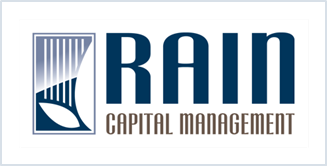Key takeaways:
- Growth in Q1 will be disappointing but will surge thereafter as the post-vaccine economy reverts to a more normal state by Q3.
- The advent of a vaccine and the resumption of strong economic growth thereafter are already largely priced into equity markets, while earnings still have a lot of catching up to do.
- Certain parts of equity markets have become richly valued and portfolio construction is currently focused on opportunities in cheaper areas of global markets.
Market Update:
The US will spend the better part of 2021 and beyond recovering from the pandemic that has left deep scars on the economy and labor markets. The good news in this story is that the vaccine came sooner and is more effective than expected. Furthermore, single-party alignment in Congress increases the chances of continued fiscal stimulus for the economy. These features will be supportive of the economic recovery in the medium term. The bad news is that the darkest days of the pandemic are still ahead of us, with the US breaking new COVID records daily. Additionally, after last year’s run up, equity markets are as richly valued as they have been since the late 1990s. This means growth will be soft at the start of the year but will likely rebound strongly as vaccine-induced herd immunity facilitates the economy’s full reopening by the 3rd quarter of 2021. Markets will face headwinds in the interim as the economy transitions from largely government-led support to the resumption of private-sector growth.
As we discussed in our last communication, the strong economic rebound sustained by the multi-trillion dollar CARES act began to slow toward the end of last year. As we enter 2021, the temporary lapse of those benefits, widespread regional COVID restrictions and coming state and local layoffs will blunt growth in Q1. After that, however, we would expect to see strong economic growth as the effects of the ongoing vaccination program begin to take effect. By late February, COVID-related deaths should begin to drop dramatically, and economic activity should rebound strongly, especially in the hardest hit sectors – leisure, hospitality, travel, retail, and food services – where there is tremendous pent-up supply and demand. With easy fiscal and monetary policy well established for the foreseeable future, the macroeconomic backdrop for a strong rebound is also in place.
The deep recession of 2020 was also reflected in large declines in operating earnings for S&P500 companies, pushing profits into recession in early 2021. While profits will begin their recovery this year, the typical earnings recession has lasted 2-3 years. The severity of the decline and the gradual economic recovery means we’re not likely to see profits surpass their 2019 peak until 2022. There will be of course large differences across sectors, with energy, financials and industrials rebounding more strongly than the likes of technology and healthcare, which held up well throughout the crisis.
This brings us to valuations. US equities have recovered significantly from March 2020 lows and in record time. However, much of that rebound came as markets looked past the economic downturn to the recovery, betting that earnings would eventually return. This, along with ultra-low interest rates, has left valuations well above historical averages. These valuations will begin to come back down to earth as earnings grow in the years ahead; in the meantime, however, valuations that are approaching the levels of the late 1990s are likely to constrain equity returns for the foreseeable future.
The good news to be found in this picture, is that there are areas of the market that are much more attractively valued than others. Unlike the Dot Com days when high valuations existed across the market, today the difference in valuation between the most expensive stocks and the least expensive stocks is higher than it has been in modern history. High tech, health care and consumer discretionary stocks dominated returns in 2020 but have valuations at more than double the average valuation of the broader S&P500. On the other hand, the remaining stocks in the index are trading at fair prices relative to their historical averages. This dispersion in valuations within the S&P500 is echoed across global markets; growth stocks (which tend to include high-flying technology names) are far more expensive than value stocks, large cap stocks are more expensive than smaller cap names, US stocks (as indicated by the S&P500) are far more expensive than foreign developed markets, while emerging markets equities are even cheaper yet, and so on.

Portfolio Update:
This has important implications for portfolios. As we look to capitalize on the rotation that will happen as the economy normalizes this year, we are most mindful of these valuation differences. In late 2020, we reoriented portfolios to take advantage of the lower valuations in certain markets. Broadly speaking, this is being expressed in the following positions:
- Greater exposure to emerging markets. The long-term growth prospects of emerging market economies are better than the US, valuations remain significantly cheaper and a weaker dollar will help returns on a relative basis. Furthermore, these countries, many of which have had better outcomes from their response to the COVID crisis, are recovering faster than developed markets at this point in the cycle.
- Greater exposure to value at the expense of growth stocks. The long period of ultra-low interest rates starting in 2009 has promoted greater interest in speculative growth stocks, leading to higher valuations in growth names, and relative underperformance in the more traditional blue-chip companies. This was an important feature of the market in the late 1990s (after years of low rates starting with the Mexican peso crisis), and the valuation difference between value and growth stocks in



